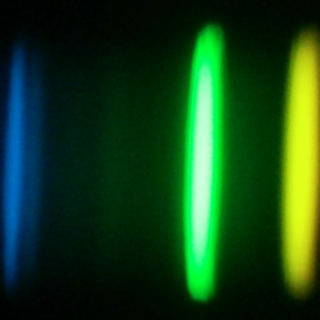Bibcode
Dey, Arjun; Najita, Joan R.; Koposov, Sergey E.; Josephy-Zack, J.; Maxemin, Gabriel; Bell, Eric F.; Poppett, C.; Patel, E.; Beraldo e Silva, L.; Raichoor, A.; Schlegel, D.; Lang, D.; Meisner, A.; Myers, Adam D.; Aguilar, J.; Ahlen, S.; Allende Prieto, C.; Brooks, D.; Cooper, A. P.; Dawson, K. S.; de la Macorra, A.; Doel, P.; Font-Ribera, A.; García-Bellido, Juan; Gontcho A Gontcho, S.; Guy, J.; Honscheid, K.; Kehoe, R.; Kisner, T.; Kremin, A.; Landriau, M.; Le Guillou, L.; Levi, Michael E.; Li, T. S.; Martini, Paul; Miquel, R.; Moustakas, J.; Nie, Jundan; Palanque-Delabrouille, N.; Prada, F.; Schlafly, E. F.; Sharples, Ray M.; Tarlé, Gregory; Ting, Yuan-Sen; Tyas, L.; Valluri, M.; Wechsler, Risa H.; Zou, H.
Bibliographical reference
The Astrophysical Journal
Advertised on:
2
2023
Journal
Citations
62
Refereed citations
50
Description
We present Dark Energy Spectroscopic Instrument (DESI) observations of the inner halo of M31, which reveal the kinematics of a recent merger-a galactic immigration event-in exquisite detail. Of the 11,416 sources studied in 3.75 hr of on-sky exposure time, 7438 are M31 sources with well-measured radial velocities. The observations reveal intricate coherent kinematic structure in the positions and velocities of individual stars: streams, wedges, and chevrons. While hints of coherent structures have been previously detected in M31, this is the first time they have been seen with such detail and clarity in a galaxy beyond the Milky Way. We find clear kinematic evidence for shell structures in the Giant Stellar Stream, the Northeast Shelf, and Western Shelf regions. The kinematics are remarkably similar to the predictions of dynamical models constructed to explain the spatial morphology of the inner halo. The results are consistent with the interpretation that much of the substructure in the inner halo of M31 is produced by a single galactic immigration event 1-2 Gyr ago. Significant numbers of metal-rich stars ([Fe/H] > - 0.5) are present in all of the detected substructures, suggesting that the immigrating galaxy had an extended star formation history. We also investigate the ability of the shells and Giant Stellar Stream to constrain the gravitational potential of M31, and estimate the mass within a projected radius of 125 kpc to be ${\mathrm{log}}_{10}\,{M}_{\mathrm{NFW}}(\lt 125\,\mathrm{kpc})/{M}_{\odot }={11.80}_{-0.10}^{+0.12}$ . The results herald a new era in our ability to study stars on a galactic scale and the immigration histories of galaxies.
Related projects

Chemical Abundances in Stars
Stellar spectroscopy allows us to determine the properties and chemical compositions of stars. From this information for stars of different ages in the Milky Way, it is possible to reconstruct the chemical evolution of the Galaxy, as well as the origin of the elements heavier than boron, created mainly in stellar interiors. It is also possible to
Carlos
Allende Prieto